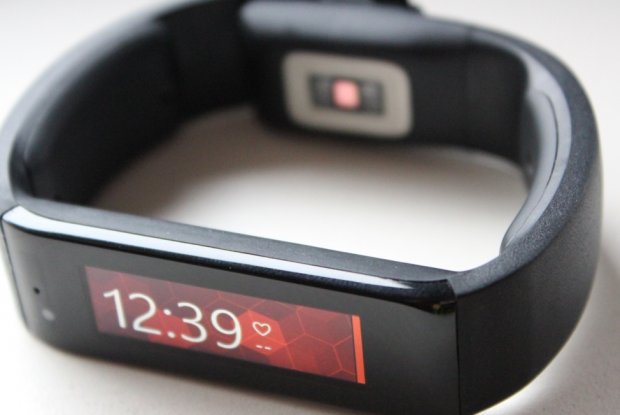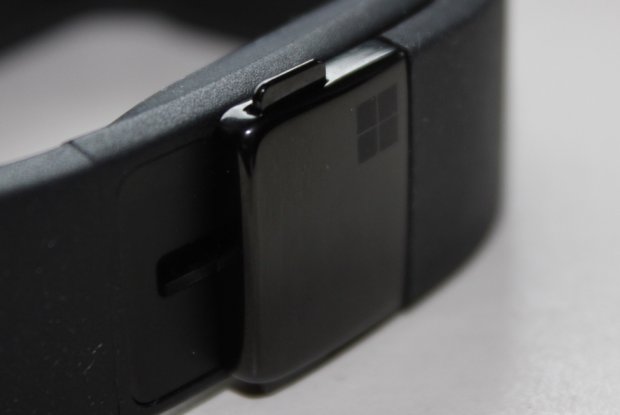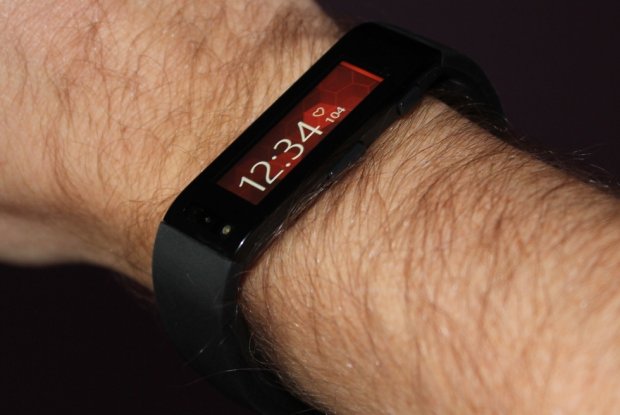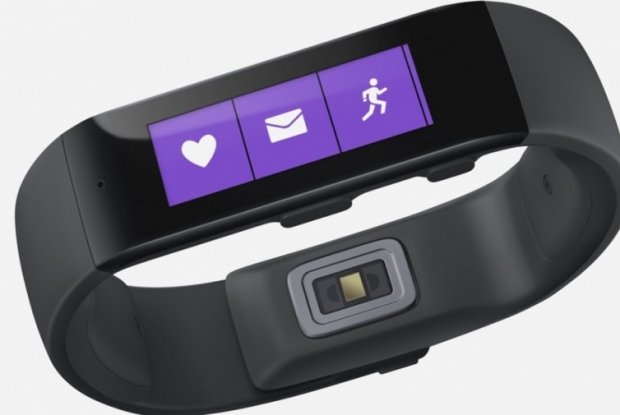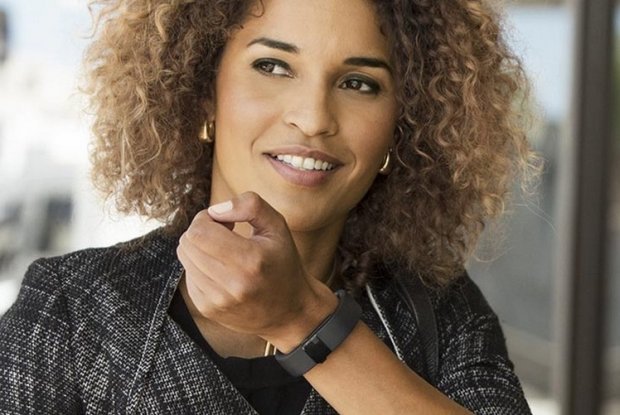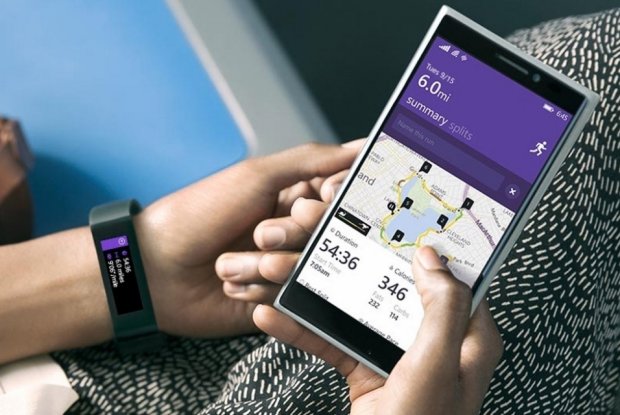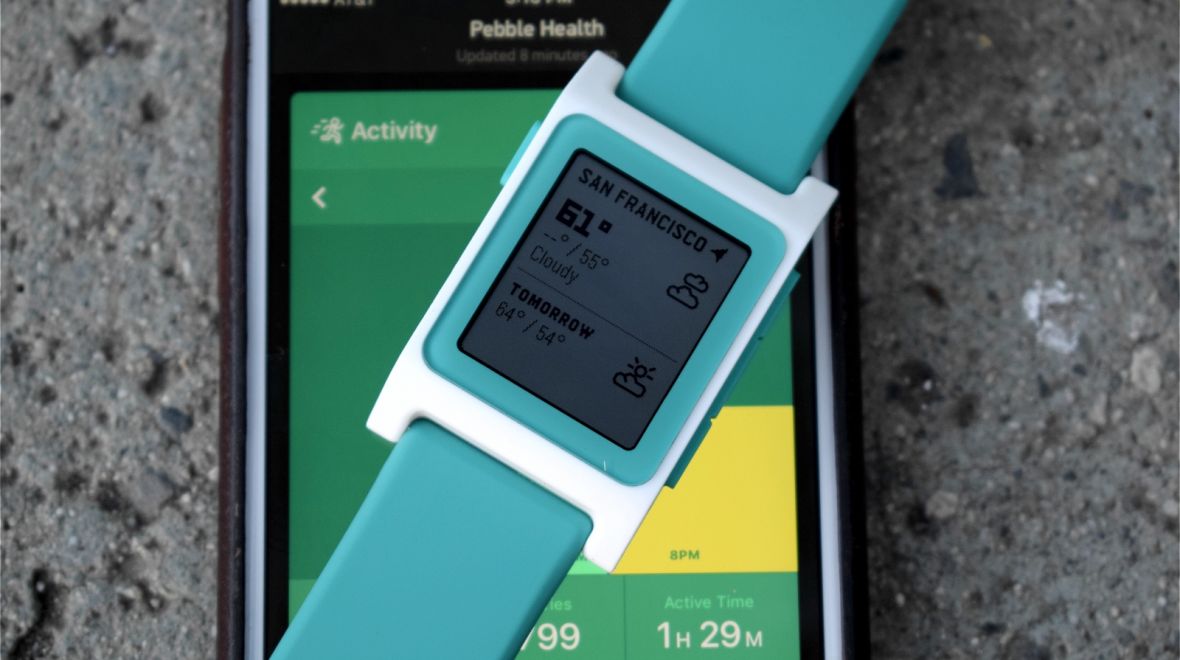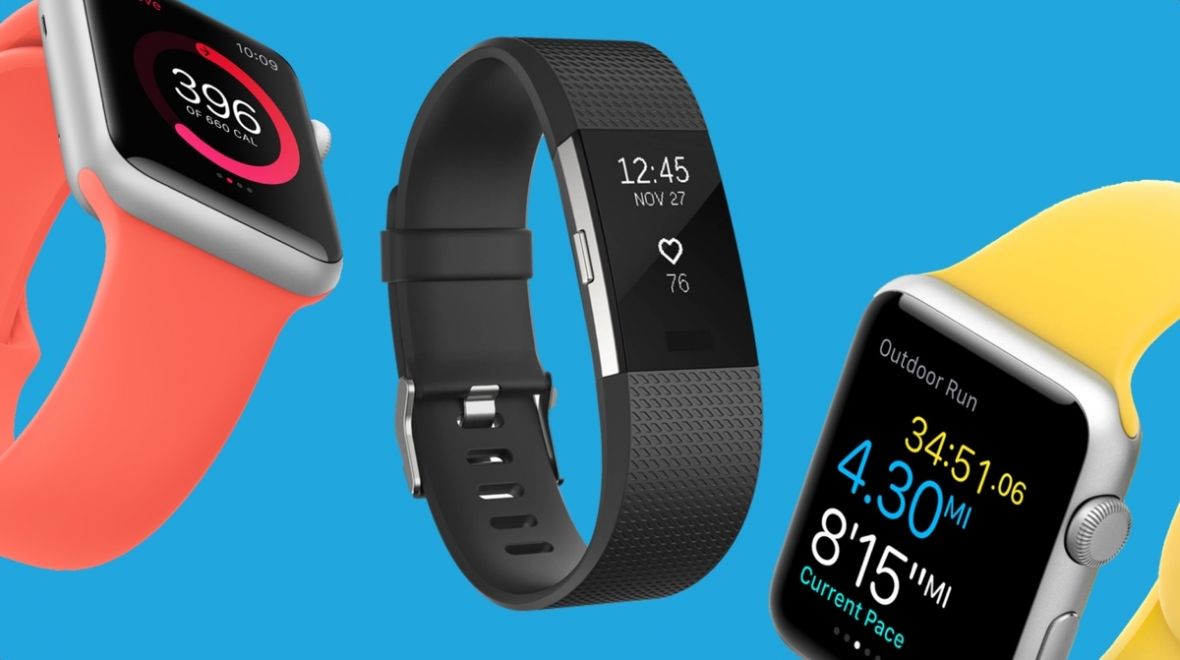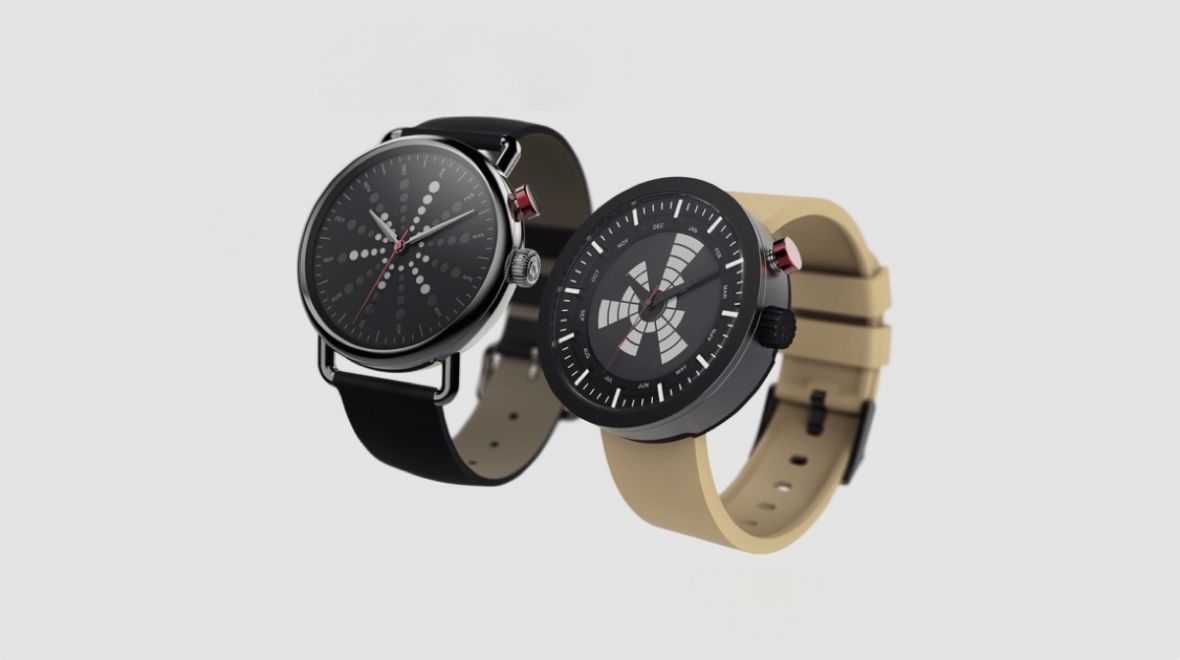The Microsoft Band has been out for nearly half a year, and it’s finally made its way from US shores to the wider world.
With an impressive spec sheet that would rival any of the big fitness tracker players, the Microsoft Band is one of the most interesting devices we’ve reviewed.
Update: The new Microsoft Band 2 is now official
Price when reviewed:$199.99Check current price
Too good to be true?
Read our full review to
find out…
Microsoft Band:
Design and build
Okay, let’s get
this out of the way now and we can move on. The Microsoft Band is an absolute
beast. It’s about the chunkiest activity tracker we’ve tried on and, honestly,
if you think you’re going to be sleep tracking with this monster on your wrist
– think again.
It’s not a slow
irritator as many fitness trackers can be, it’s uncomfortable right from the
off. That’s because of the shape of the thing. The top part, where the screen
sits on the front and the magnetic charging clasp on the back, is completely
flat, with not a curve in sight until you hit the straps.
While Microsoft’s product imagery shows people wearing it like a watch, it’s actually designed to sit on the inside of the wrist. But both ways were cripplingly uncomfortable, and this was backed up by everyone we forced to try it.
It actually hurts to wear, even loosely.
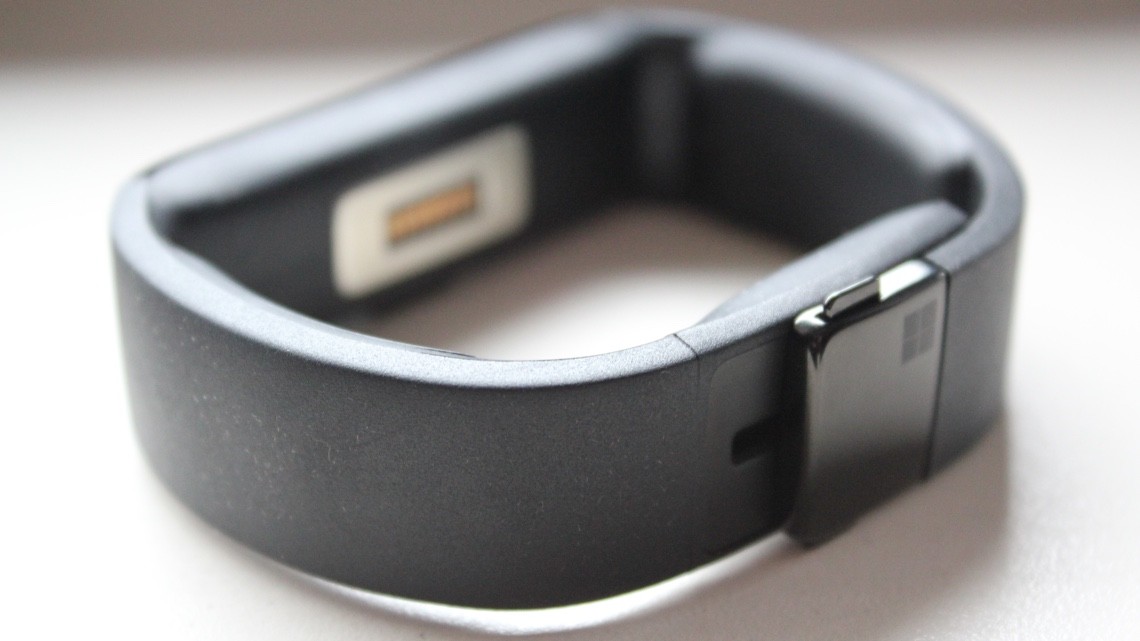
You can see the
problem. We’ve been testing the Microsoft Band alongside the Sony SmartBand Talk, and we’ve also been wearing the excellent Garmin Vivosmart as of late
too. Both of these rivals have some form of curvature behind their display so
they sit a naturally on your wrist. With the Band, you’ll find gaps at the
edges where it extends outwards searching for its first hint of a bend.
Yes, there are
three different sizes on offer and yes, the adjustable clasp is pretty good –
but you’ll still struggle to get a fit that feels right. It’s a ridiculous
design and the large heart rate sensor and whatever hardware it is Microsoft
have stuffed into the insides of the strap (which dig into the sides of your
wrist) don’t help either.
Even the
physical buttons – one a standby one and one that activates preset functions –
feel wrong. Why are they so big and why are they so clunky?
To say the
Microsoft Band looks and feels rushed is an understatement. Its design is
simply awful – a step back in time to a horrible wearable tech era – and, if
the look and feel of your wearable is important to you (and it should be),
steer well clear.
Microsoft Band:
Display
The display is a capacitive 1.4-inch (11mm x 33mm) TFT full
colour touchscreen one, with a resolution of 320 x 106. While clear and bright
enough, it’s hardly eye-popping like the Samsung Gear S and
its 2-inch curved Super AMOLED display and it also lags behind the similarly
form-factored Samsung Gear Fit in the
display stakes as well.
You’d have thought Microsoft would have pushed the screen
stakes but, as the device is less than $200, we’ll give them the benefit of the
doubt. After all, it’ll still give you plenty of info and does of course better
the likes of the Fitbit Charge HR and the Jawbone UP3 by offering some virtual
visuals on the go.
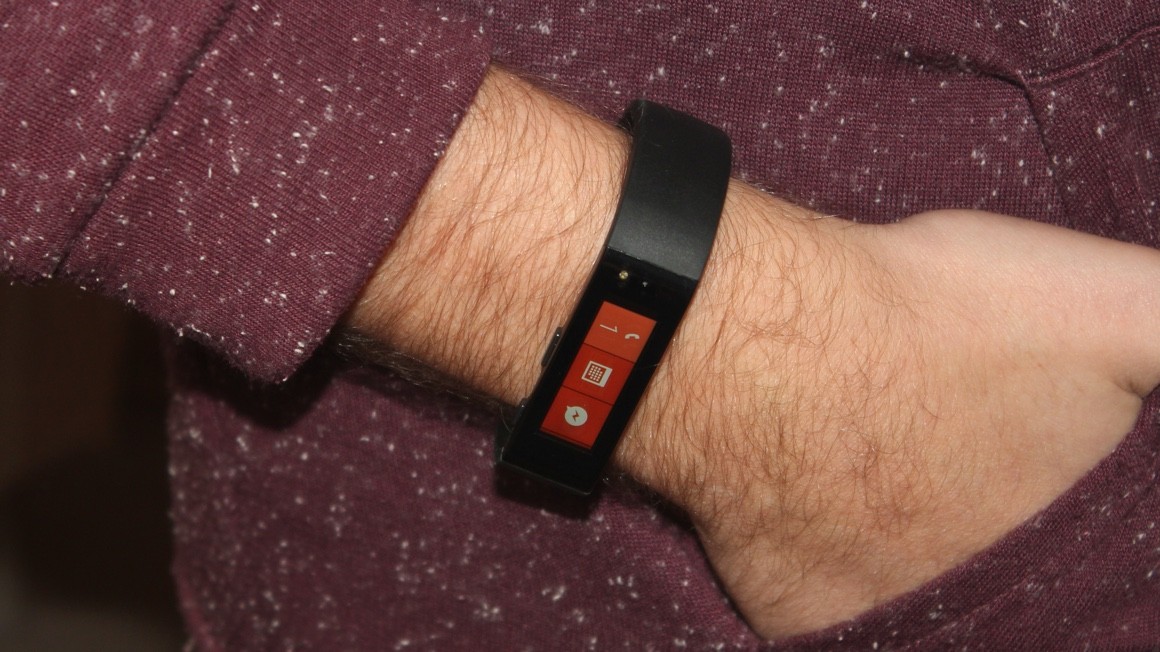
On screen, it looks very, well, Windowsy. There’s a similar Microsoft tile based UI that
you would have come across on your PC, or your Xbox – and it’s a setup that
lends itself pretty well on the slim display.
Swiping left to right feels natural and drilling down into
the tiles for more info doesn’t disappoint, as Microsoft has brought much of
the feel of Windows Phone to the party, so the fonts and graphics are pretty
swish.
Microsoft Band: GPS and sensors
We started with the terrible (design), we just hit on the
okay (display), so let’s now get down to the great: GPS connectivity built
right into the Band, so there’s no need to carry your smartphone around with
you in order to accurately record and map your runs.
This is a bold move from Microsoft and for the fitness band industry
in general – although the Polar M400 blurs
the line between activity tracking and run recording with its GPS sensor and
the Sony SmartWatch 3 is the
first Android Wear smartwatch packing GPS skills.
But neither the Jawbone UP3 or the Fitbit Charge HR have GPS
connectivity so Microsoft has definitely hit upon a winner with its inclusion
in its debut fitness band.
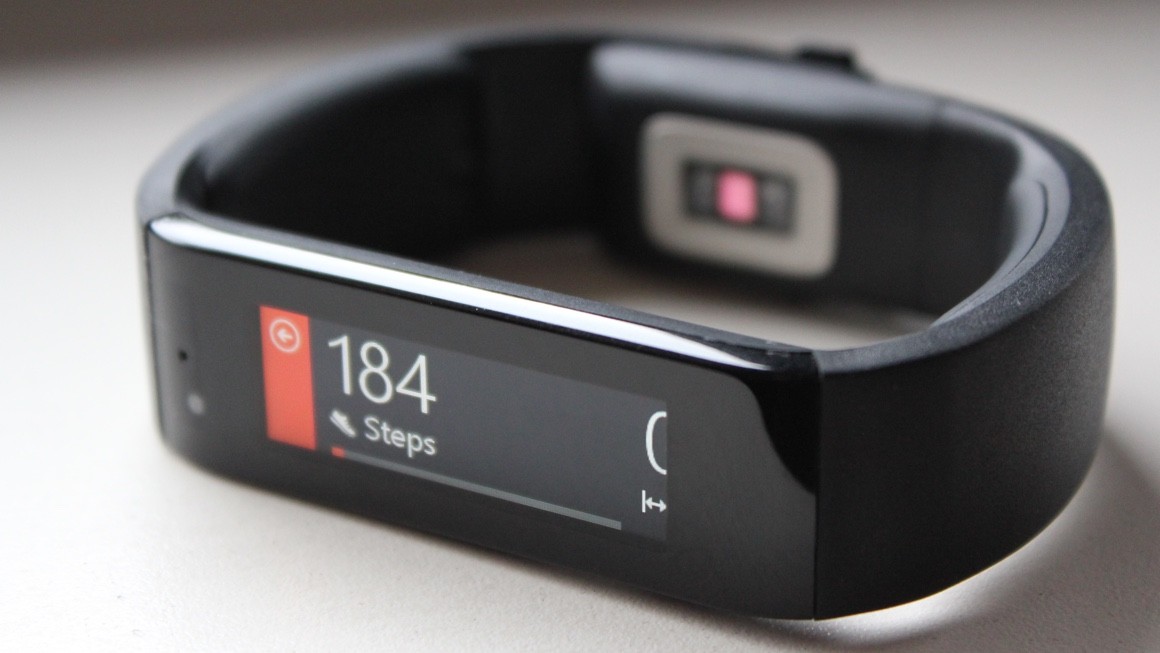
Fortunately, the GPS works well. Even though the Band is US
only for now (and even the app is not technically available outside of the
States) we had no bother locking onto a GPS satellite in quick-time in the UK
and were able to track runs accurately when compared directly to the Adidas
miCoach Smart Run.
Wareable guide: The best GPS running watch
A word of warning though – the Microsoft Band asks you if you
want to start your run while it searches for GPS. Don’t do it. Not only will
the first minute of your run be inaccurately tracked, this mode also seems screw
up the GPS sensor as we kept losing our signal – something that didn’t happen
when we locked on before beginning a tracked run.
Like the Intel
Basis Peak and the Fitbit
Charge duo, there is 24/7 heart rate monitoring on board
thanks to the (massive) optical heart rate sensor and you can quickly swipe to
see what your BPM reading is at any time.
There’s also a UV monitor for assessing whether you need to apply
some sunscreen or not, and the sensor check-list continues with a 3-axis
accelerometer, a gyrometer, an ambient light sensor, a skin temperature
sensor and a galvanic skin response sensor.
Microsoft Band: Activity tracking
Basic fitness tracking on the Microsoft Band is good – if not brilliant.
In terms of accuracy, the step counter was on the money, if a smidgen more
generous than Garmin Vivosmart and, of course, you’ll get a calorie burn
calculation based on this, your activity and the personal data you input into
the app – more of that later.
Wareable guide: Best
fitness trackers you can buy
The sleep tracking provides key metrics such as duration of
sleep, your efficiency percentage (time spent sleeping divided by total time),
how many times you woke up, how many calories you burned while sleeping, how
much of your sleep was ‘restful’ and what your heart rate was. That’s if you
manage to get to sleep with the world’s most uncomfortable fitness band on your
wrist.
You can view basic stats on the device itself, either by jumping
into the appropriate tile, or by changing the view on the homescreen but for
more detail you’ll need to hit up the app.
Microsoft Band: Workouts and training
A trump card for the new fitness tracker is the guided
workouts that are built right into the Band. This means programs and workouts
from the likes of Gold’s Gym, Shape and Men’s Fitness with exercise prompts on
the band and extra info in the app.
To carry out a workout simply select a program you’re
interested in using the app and beam it over to the Band. There’s a wide range
of activities and sports on offer, although it is all a bit manual and basic.
See also: Jawbone UP MOVE essential info
Your Band won’t talk to you, it will simply tell you that you
should be doing 25 seconds of squats for example – you’ll need to keep glancing
at it to see what you should be doing and nothing is automatically detected in
terms of your movement.
The
running app is also basic – but does the job for a casual runner. Don’t expect
any cadence, elevation or interval data – but you will get a GPS route of your
map, with colours indicating your speed, and the device itself will provide
real-time info such as distance, pace, split times and heart rate. The
Microsoft Health app – which we’ll come to in a bit – will also give you a
suggested recovery time.
Microsoft Band:
Smartphone notifications

There’s no
installing extra apps with the Microsoft Band – what you see is what you get –
although you can play around with what you see, tile-wise, using the device
itself or the app.
There’s incoming
call alerts, text notifications, email and calendar updates and social media
alerts from Facebook and Twitter. There’s no third-party support as such but
you can turn on a ‘Notifications Center’ tile to have every single message
relayed on your Band.
Essential reading: Fitbit Surge specs, release date, price
So if you want
WhatsApp alerts, for example, you’ll want this tile showing. Be aware though
you’ll also get all the general notification bumph showing up from your phone
too with this tile on – stuff like battery alerts, system updates and so on.
If you live in
the US and are rocking a Windows Phone, you’ll also be able to tap into the
delights of Cortana – although we have to confess to not being able to test
this feature here in Blighty.
Microsoft Band:
Microsoft Health app

Microsoft has played an ace card
by making the Microsoft Band compatible with Android and iOS, as well as
Windows Phone – by way of the Microsoft Health app.
Similar to the efforts we’ve seen
emerge from Mountain View and Cupertino, Microsoft Health will attempt to be a
one-stop-shop for all your health and fitness data; drawing in information from
not only the new Microsoft Band, but from third-party hardware and apps as
well.
Essential reading:Google Fit v Apple
Health
For now, it’s pretty basic and
essentially acts as a regular fitness tracker app – showing historical data and
graphical representations of everything its paired device is recording.
Partners such as RunKeeper,
MapMyFitness, Jawbone and MyFitnessPal are already on board with Microsoft
Health and the company is planning further collaborations, but it does very
much feel like a work in progress – albeit quite a promising one.
Microsoft Band:
Battery life
Microsoft is stating two days
battery life for the Band and you’ll get that…so long as you turn off the watch
mode. If you want your Band to tell you the time, don’t expect even a day’s
life from Microsoft’s new toy. And if you go for even a short run with GPS on,
get your charger ready for when you get home.
Like most wearables, you need a
separate accessory for charging; the Microsoft Band ships with a magnetic-clip
USB cable and a full-charge is pretty quick – well inside two hours.
The Band is splash and sweat
proof, but not water resistant, so no swimming data can be recorded and you
shouldn’t even wear it in the shower.
Microsoft Band
By Microsoft
In terms of design the Microsoft Band is a chunky beast at best and an absolute insult to the wearable tech movement at worst. We get the feeling that Microsoft cares more about getting its software onto as many systems as possible than it does about winning a hardware battle and sees the Band as an early, and cheap, way of gaining some ground. However, GPS is a big plus point and the fitness tracking, while basic, works well enough. 24/7 heart rate monitoring is also crucial and, with a device selling for under $200 that also boasts a decent, if unspectacular, colour touchscreen display – Microsoft’s newest wearable isn’t all bad. We’d love to mark it higher – the feature set and the tech on board, combined with that price tag are impressive – but we just can’t look past the fact that, as a wearable, it fails on a fundamental level…in that it’s not wearable at all.
Hit
- GPS for accurate run tracking
- Clear, colour display
- Smartphone notifications
Miss
- It looks awful
- It feels awful
- Battery life is poor
SOURCE:http://www.wareable.com/microsoft/microsoft-band-review

